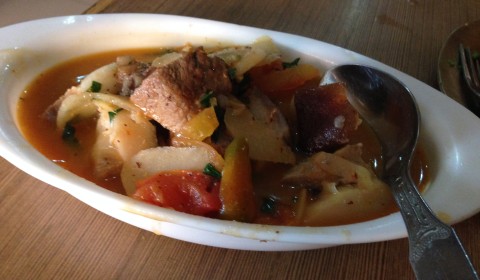Have you been to Thailand?
If the answer is yes, have you wondered why Bangkok, the capital of Thailand, has an airport that is called “Suvarnabhoomi”? (Golden land in Sanskrit)
Have you also wondered why the King of Thailand is referred to as “Rama” IX?
India and Thailand, with not much distance between them, happen to have many things in common. More than what meets the eye. We’re culturally very different, no doubt. The India of today is very different from the Thailand of today. That’s why we go there and do things we can’t do here.
Once upon a time, very long ago, even before Thailand was Siam, there existed a kingdom on the banks of the mighty river Brahmaputra. These people were called the “Dai” or “Tai” people”. They were said to have migrated from the Yunan province in Southern China. These people, from China, migrated to different parts of South East Asia (Indo-China). Countries such as Thailand, Laos, Myanmar and Vietnam, all have a significant number of Tai descendants.
As time went by, these autonomous kingdoms (Mong) were shaped by constant Chinese and Indian influences. Sanskrit, the native language of India, travelled to these countries through the spread of Hinduism. This is why we see so many Sanskrit words being used in these countries. Siam itself is derived from “Shyama”.
South Indian monarchs such as Rama Rama are said to have been an ambassador for the religion. The Ankor Vat temple in Cambodia bears witness to this. Buddhism too traveled to these parts along with Sino cultures. Over centuries, each of these kingdoms developed their own identities through years of interaction. The South East Asian nations of today are a cultural product of all these factors.
The Tai people also ruled the Brahmaputra river basin. Over time, as history bears witness, a certain sub-culture had to adjust to native trends and gradually their own culture developed. The descendants of these Tai people are called the “Ahoms“. They resided in the various modern day North eastern Indian states. Back then, it was all one kingdom, Ahom.
Today, this consolidated region is called Assam. Guwahati is its capital. It is the gateway to the remote and mysterious North Eastern region of India. Things get less familiar for an Indian as one moves East. For a person who’s looking to eat their way through this region, Guwahati is the perfect place to begin.
Assamese food is a mixture of native culinary traditions and Bengali. Due to its proximity with West Bengal and Bangladesh, the food is quite similar.
Freshwater Fish, rice, tenga (a sour, green mango-like fruit) and other vegetables feature in meals. This is usually eaten at home. Quite like anywhere else in India.
Traditionally, being vegetarian in this part of the country is rare. Duck, pigeon, pork, fish and chicken feature in restaurant menus which are known to dish out authentic Assamese fare. Ingredients such as lai shak (broad mustard leaves), bamboo shoot and tenga are used extensively.

Out of all the things I ate, the one thing I enjoyed most was khorika. This is like a charred kebab skewered on a satay stick. Pork, chicken, duck and anything else can be used. Variations of this can be seen all across South East Asia, especially as inexpensive street food.
The city has many restaurants which serve everything. You won’t miss being treated like a tourist here. Taking a trip down the mighty Brahmaputra can be an option. This river is different because unlike the Ganga and Yamuna, Brahmaputra (Son of Brahma, the Creator in the Holy Hindu trinity) is a male river. Back in China, it is known as the destructive Tsangpo (the Purifier). This Mighty river drains and gives life to the collective population of three countries (China, India, Bangladesh).
It is also considered to be one of the most turbulent and destructive rivers in the world, known to take life away whenever it feels like. As it flows further South, it calms down and finally unites with the gentle, holy Ganga to form the largest and most fertile Delta in the world, completing its long journey and maintaining balance.
Someone who wants an experience of the mysteries of North Eastern cuisine should start their journey at Guwahati. Do bear in mind that if you find Guwahati too exotic to digest, treading further East might not be advisable.
In a nutshell, for any adventurous foodies out there, imagine Thailand without any western influences. No shopping, no Singha beer, no gogo bars and no beaches.
Replace rapid urbanization with raw, natural, beautiful terrain.
Add a dose of warm Indian hospitality.
(Don’t forget your camera!)
Now, wouldn’t that be a food adventure worth blogging about?
